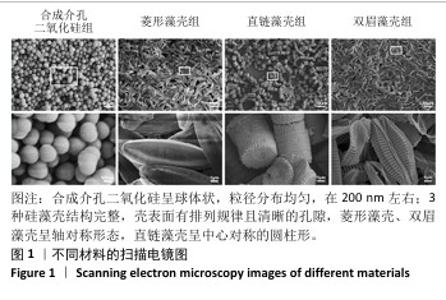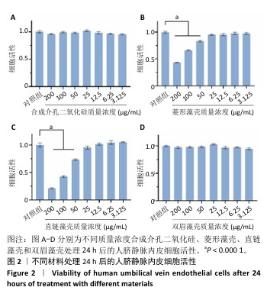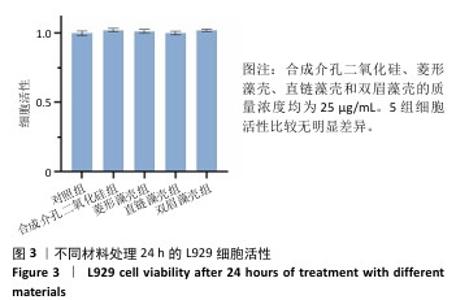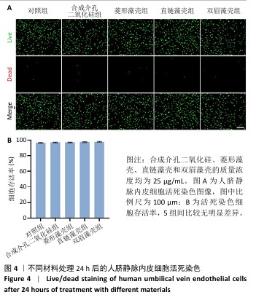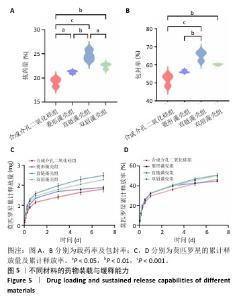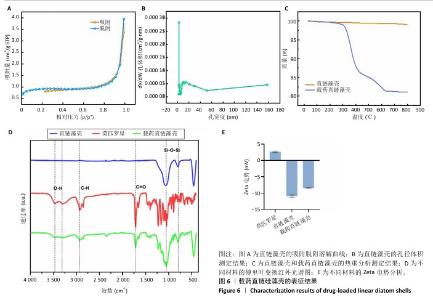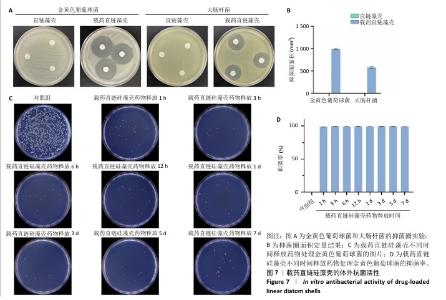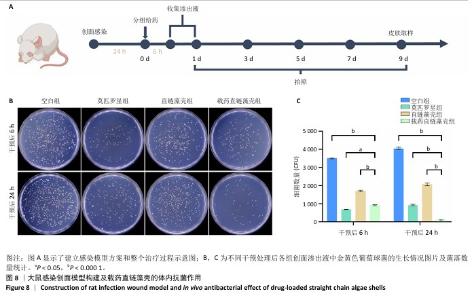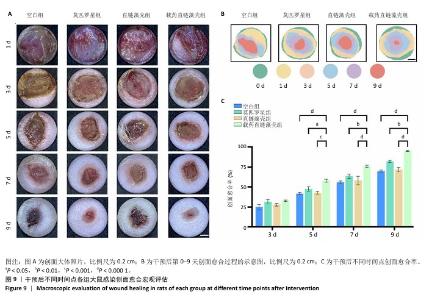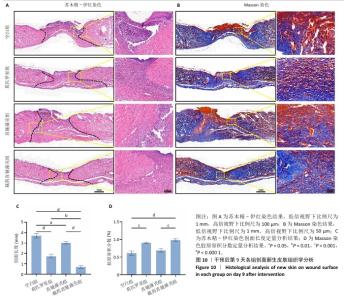[1] DONG R, GUO B. Smart wound dressings for wound healing. Nano Today. 2021;41:101290.
[2] LI M, LIANG Y, LIANG Y, et al. Injectable stretchable self-healing dual dynamic network hydrogel as adhesive anti-oxidant wound dressing for photothermal clearance of bacteria and promoting wound healing of MRSA infected motion wounds. Chem Eng J. 2022;427:132039.
[3] HAIDARI H, BRIGHT R, STRUDWICK XL, et al. Multifunctional ultrasmall AgNP hydrogel accelerates healing of S. aureus infected wounds. Acta Biomater. 2021;128:420-434.
[4] ROY S, SANTRA S, DAS A, et al. Staphylococcus aureus Biofilm Infection Compromises Wound Healing by Causing Deficiencies in Granulation Tissue Collagen. Ann Surg. 2020;271(6):1174-1185.
[5] FANG GY, WU FH, MU XJ, et al. Monitoring longitudinal antimicrobial resistance trends of Staphylococcus aureus strains worldwide over the past 100 years to decipher its evolution and transmission. J Hazard Mater. 2024;465:133136.
[6] FARJADIAN F, ROOINTAN A, MOHAMMADI-SAMANI S, et al. Mesoporous silica nanoparticles: Synthesis, pharmaceutical applications, biodistribution, and biosafety assessment. Chem Eng J. 2019;359:684-705.
[7] HEINTZE C, BABENKO I, ZACKOVA SUCHANOVA J, et al. The molecular basis for pore pattern morphogenesis in diatom silica. Proc Natl Acad Sci USA. 2022;119(49):e2211549119.
[8] ZOBI F. Diatom Biosilica in Targeted Drug Delivery and Biosensing Applications: Recent Studies. Micro. 2022;2(2):342-360.
[9] VONA D, FLEMMA A, PICCAPANE F, et al. Drug Delivery through Epidermal Tissue Cells by Functionalized Biosilica from Diatom Microalgae. Mar Drugs. 2023;21(8):438.
[10] DE P, MAZUMDER N. Diatoms as Sensors and Their Applications//MAZUMDER N, GORDON R. Diatom Microscopy. 1st ed. Wiley, 2022: 251-281.
[11] GOESSLING JW, Wardley WP, Lopez-Garcia M. Highly Reproducible, Bio‐Based Slab Photonic Crystals Grown by Diatoms. Adv Sci. 2020; 7(10):1903726.
[12] LE TDH. Hydrophobic and hydrophilic drug loading capacity of micro diatom frustule from diatomite. J Tech Educ. 2021;(67):35-40.
[13] SUN X, ZHANG M, LIU J, et al. The Art of Exploring Diatom Biosilica Biomaterials: From Biofabrication Perspective. Adv Sci. 2024;11(6): 2304695.
[14] ZHANG X, LIU X, XU Y, et al. Compressibility, permeability and microstructure of fine-grained soils containing diatom microfossils. Géotechnique. 2024;74(7):661-675.
[15] LI W, CHEN J, ZHAO S, et al. High drug-loaded microspheres enabled by controlled in-droplet precipitation promote functional recovery after spinal cord injury. Nat Commun. 2022;13(1):1262.
[16] LIU T, LU Y, ZHAN R, et al. Nanomaterials and nanomaterials-based drug delivery to promote cutaneous wound healing. Adv Drug Deliv Rev. 2023;193:114670.
[17] WANG M, HUANG X, ZHENG H, et al. Nanomaterials applied in wound healing: Mechanisms, limitations and perspectives. J Control Release. 2021;337:236-247.
[18] LI Z, LIU J, SONG J, et al. Multifunctional hydrogel-based engineered extracellular vesicles delivery for complicated wound healing. Theranostics. 2024;14(11):4198-4217.
[19] HAN C, BARAKAT M, DIPIETRO LA. Angiogenesis in Wound Repair: Too Much of a Good Thing? Cold Spring Harb Perspect Biol. 2022;14(10): a041225.
[20] MATOORI S, VEVES A, MOONEY DJ. Advanced bandages for diabetic wound healing. Sci Transl Med. 2021;13(585):eabe4839.
[21] O’CONNOR JT, STEVENS AC, SHANNON EK, et al. Proteolytic activation of Growth-blocking peptides triggers calcium responses through the GPCR Mthl10 during epithelial wound detection. Dev Cell. 2021; 56(15):2160-2175.e5.
[22] XUAN J, FENG W, WANG J, et al. Antimicrobial peptides for combating drug-resistant bacterial infections. Drug Resist Updat. 2023;68:100954.
[23] GORAIN B, PANDEY M, LENG NH, et al. Advanced drug delivery systems containing herbal components for wound healing. Int J Pharm. 2022;617:121617.
[24] WU SH, MOU CY, LIN HP. Synthesis of mesoporous silica nanoparticles. Chem Soc Rev. 2013;42(9):3862.
[25] LEE J, LEE HA, SHIN M, et al. Diatom Frustule Silica Exhibits Superhydrophilicity and Superhemophilicity. ACS Nano. 2020;14(4): 4755-4766.
[26] AMODA A, BORKIEWICZ L, RIVERO-MÜLLER A, et al. Sintered nanoporous biosilica diatom frustules as high efficiency cell-growth and bone-mineralisation platforms. Mater Today Commun. 2020;24:100923.
[27] MAHER S, KUMERIA T, AW MS, et al. Diatom Silica for Biomedical Applications: Recent Progress and Advances. Adv Healthc Mater. 2018;7(19):1800552.
[28] MAHER S, ALSAWAT M, KUMERIA T, et al. Luminescent Silicon Diatom Replicas: Self‐Reporting and Degradable Drug Carriers with Biologically Derived Shape for Sustained Delivery of Therapeutics. Adv Funct Mater. 2015;25(32):5107-5116.
[29] LI K, LI Y, WANG X, et al. Diatom-inspired multiscale mineralization of patterned protein–polysaccharide complex structures. Natl Sci Rev. 2021;8(8):nwaa191.
[30] LI Y, ZHANG C, HE X, et al. Solids retention time dependent, tunable diatom hierarchical micro/nanostructures and their effect on nutrient removal. Water Res. 2022;216:118346.
[31] AL-GHOUTI MA, KHRAISHEH MAM, ALLEN SJ, et al. The removal of dyes from textile wastewater: a study of the physical characteristics and adsorption mechanisms of diatomaceous earth. J Environ Manage. 2003;69(3):229-238.
[32] PERL TM, PFALLER MA, HERWALDT LA. Intranasal Mupirocin to Prevent Postoperative Staphylococcus aureus Infections. N Engl J Med. 2002;346(24):1871-1877.
[33] KUMAR D, BISHT D, FAUJDAR SS. Incidence of Mupirocin Resistance in Staphylococcus Aureus Isolated from Rural Population: A New Emerging Challenge. Int J CurrRes Rev. 2020;12(22):82-85.
[34] NASSIF N, LIVAGE J. From diatoms to silica-based biohybrids. Chem Soc Rev. 2011;40(2): 849-859.
[35] DAOOD U, MATINLINNA JP, PICHIKA MR, et al. A quaternary ammonium silane antimicrobial triggers bacterial membrane and biofilm destruction. Sci Rep. 2020;10(1):10970.
[36] YAO G, MO X, YIN C, et al. A programmable and skin temperature–activated electromechanical synergistic dressing for effective wound healing. Sci Adv. 2022;8(4):eabl8379.
[37] WU Y, WANG Y, LONG L, et al. A spatiotemporal release platform based on pH/ROS stimuli-responsive hydrogel in wound repairing. J Control Release. 2022;341:147-165.
[38] WANG X, WANG Q. Enzyme-Laden Bioactive Hydrogel for Biocatalytic Monitoring and Regulation. Acc Chem Res. 2021;54(5):1274-1287.
|
